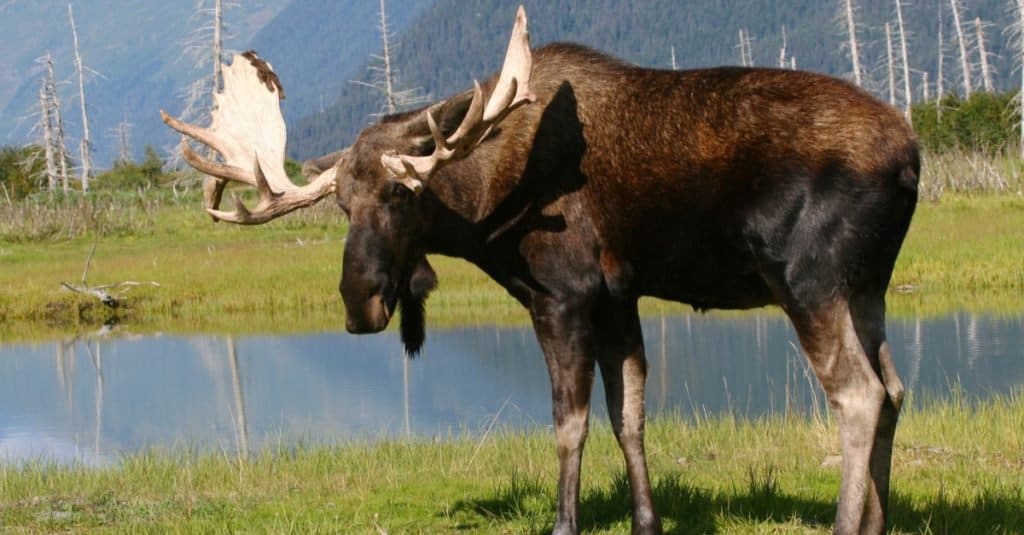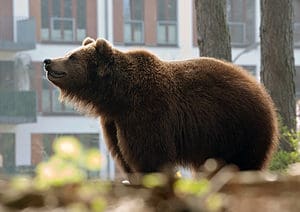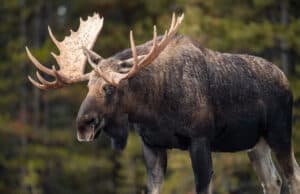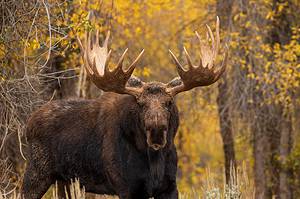Want to hear a moose do a Chewbacca impression? Yes, we did too and this one is pretty impressive! In this fascinating video, shot at night, we see a group of moose in New Brunswick, Canada, licking a salt block. Actually, according to the video notes, it is the salt block that is causing the issue! One cow, in particular, is getting pretty possessive about it.
Moose Living in Canada

The largest of all deer species, moose reach heights of over six feet, and can weigh nearly a ton.
©Steve Bower/Shutterstock.com
Moose are inhabitants of Europe, Eurasia, and North America. They are the largest of all the deer species. Adults can stand over six feet in height and weigh up to 1,800 pounds. Males grow huge antlers that reach up to six feet across. Even though they look large and clumsy, they can run at up to 35 miles an hour. Adult males are bulls, while adult females are cows. A young moose is a calf.
There are actually four subspecies of moose living in Canada and these are the Alaska/Yukon moose, the Shiras moose, the western moose, and the eastern moose. They live in so many areas of the country that they are a symbol of Canada. They also appear on Ontario’s provincial coat of arms. Moose also live in Newfoundland, Québec-Labrador Peninsula, Nova Scotia, British Columbia, near the Arctic Ocean, and New Brunswick.
The Life of a Moose
So, what do moose do when they are not fussing over salt licks? They live in boreal forests. Areas of forests where there has been logging or a forest fire attract moose. This is because they like the new vegetation that grows in such an environment. For the same reason, they like new growth of balsam fir, but are also keen on twigs of the birch, willow, dogwood, and hazel trees. In the summer, however, they feed from tree leaves and aquatic plants.
Mineral Licks
The issue in this video has been caused by a salt block. It looks as if this one has been provided by humans but they also occur naturally. These are natural deposits of minerals that moose use in spring through to early fall. They contain high mineral concentrations and are formed when harsh weather exposes deposits of minerals in the ground. They are found in springs, swamps, and mud and contain a variety of minerals which can include sodium, calcium, phosphorous, and iron. These licks play a vital part in keeping animals from the deer family healthy but are also important for other animals including cattle, mountain goats, and even elephants. They help to support growth and bone and muscle development. No wonder this cow moose is so particular about hers!
Up Next…
- Watch This Moose Effortlessly Run On Top of the Water
- Watch a Grizzly Ambush Three Moose in Denali
- Watch a Gigantic Moose Chase Down a Racing Grizzly
The photo featured at the top of this post is © iStock.com/RichardSeeley
Thank you for reading! Have some feedback for us? Contact the AZ Animals editorial team.






